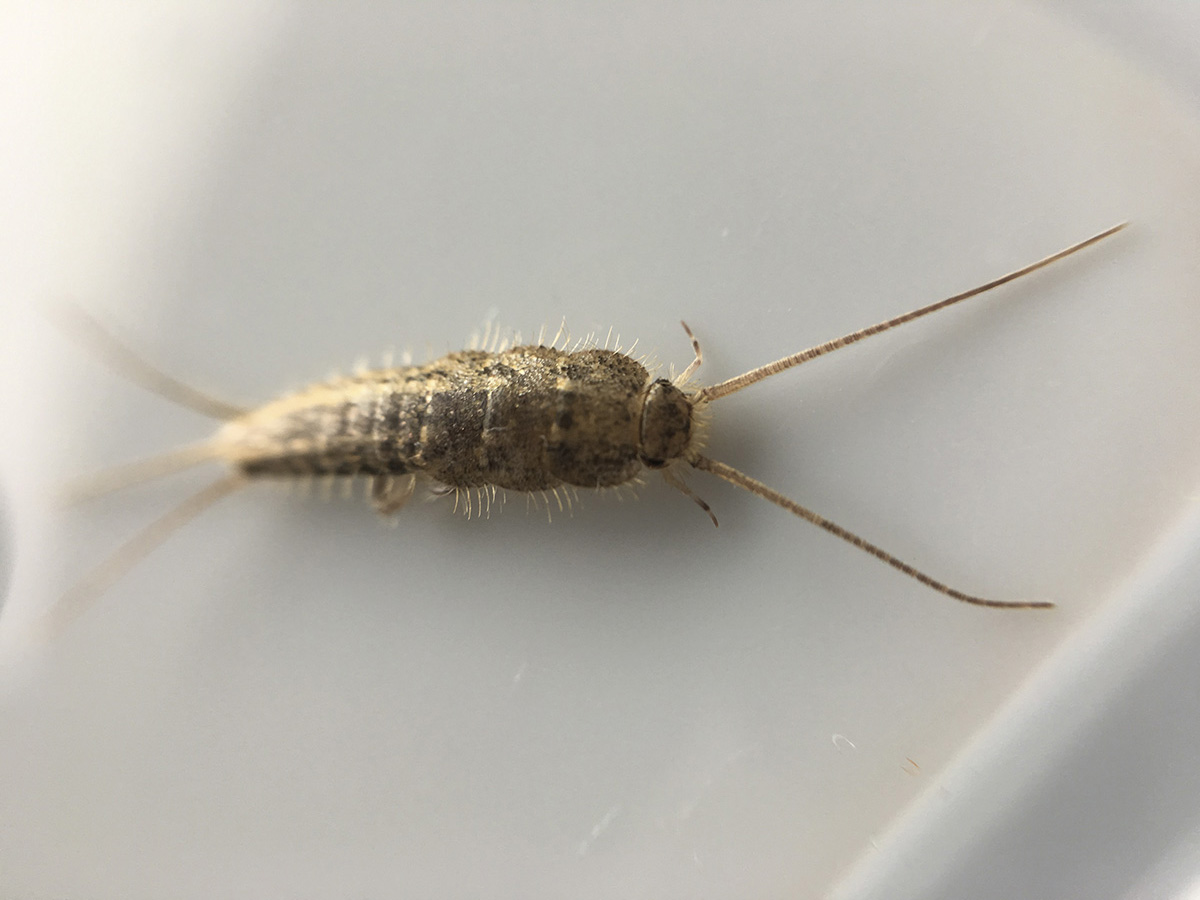
By Jody Green, Extension Educator
Silverfish and firebrats are common in Nebraska homes, especially in buildings with cedar shake shingles on the roof. They are common scavenging insects that live outdoors in rotting wood and areas with high moisture and humid environments. They can be challenging to eliminate when populations establish indoors because of their adaptive biology and the abundance of food sources. Even the cleanest-kept homes may house a few of these nuisance pests. It is important to know these insects do not bite. They are not of medical importance and will not ruin the structural integrity of your home.
IDENTIFICATION
Silverfish and firebrats are primitive, wingless, carrot-shaped insects with two thin antennae on the head and three tail-like appendages extending from a tapered abdomen. They have brownish, gray and white colored scales on their flattened bodies. When full grown, they measure 1/4- to 1/2–inch long.
The difference between silverfish and firebrats include the stoutness of the bodies and the color of scales. Silverfish are narrower in the abdomen with powdery, dull, silver/brown scales. As the name implies, their quick darting movements resembles that of a fish. Firebrats appear stouter, less tapered, with a mottled brown-gray color.
BIOLOGY AND HABITAT
Silverfish prefer damp, warm places like basements, bathrooms, kitchens, attics and laundry rooms that range from 72–80°F and a relative humidity of 75–97%. Firebrats, as their name implies, like it hot and thrive in boiler and furnace rooms, steam tunnels, bakeries with high temperatures which range from 89–105°F and a relative humidity of 76–85%. Even though firebrats are known for their affinity for heat, they can survive a wide temperature range, which includes freezing temperatures.
Silverfish and firebrats are often associated with cedar shake roofs in Nebraska. When conditions are suitable, populations will grow and insects will enter the structure through light fixtures, ceiling fans and vents.
LIFE CYCLE
Silverfish and firebrats do not undergo metamorphosis and will continue to molt throughout their lifetime. Nymphs and adults resemble one another, but younger nymphs lack scales. Female firebrats lay an average of 50 eggs in crevices and can complete their life cycle in 2–4 months. Silverfish life cycle can take over a year. Both are known to live over 2 years, which is long-lived for an insect.
FOOD AND FEEDING BEHAVIOR
Silverfish and firebrats feed on carbohydrates, anything with high protein and high sugar content. These starchy materials include wallpaper glue, book binding, fabrics, cereals, plaster, cardboard, carpet and other cellulose or paper products. They can survive extended periods (one year or more) without feeding and acquire water from the environment.
SIGNS OF INFESTATION
They do most of their feeding at night, but can be found during the day if trapped in sinks, bathtubs or drawers when surfaces are too slippery to escape. They do not come up out of drains. They also leave behind tiny, dry pelleted feces.
Both silverfish and firebrats have weak jaws and their mandibles can only scrape the surfaces of their food, leaving characteristic damage on items. They leave small holes in objects and yellow stains, causing damage to old collections and sentimental artifacts, particularly newspaper clippings, magazines, books and photographs.
CONTROL METHODS
The use of sticky traps can help determine the population size and pinpoint the location of the greatest number of insect pests. To remove silverfish or firebrats from ceilings, walls and floors, it is best to use a vacuum. To protect important products like paper, photographs, linens and foodstuff, store them inside airtight containers in dry locations.
To make the home less attractive to silverfish and firebrats, modify the environment to decrease the moisture and humidity in the structure. This can be done by using a dehumidifier, fixing plumbing leaks, increasing ventilation and air circulation, fixing moisture problems and changing the type of roofing material.
There are a variety of insecticides labeled for silverfish (and firebrats) that can be used in heavy, long-term infestations, including residual sprays, dusts and baits. Due to the risk of insecticide exposure, it is recommended to contact a pest management company.